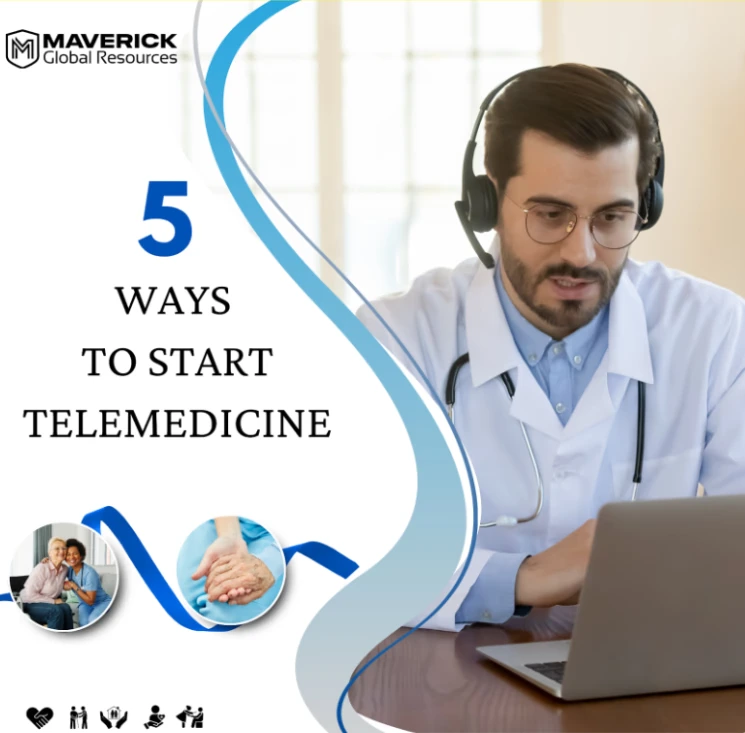Medical practices are constantly evolving, seeking innovative solutions to manage growing patient needs and administrative tasks. One pressing decision many practices face is whether to hire virtual health assistants or stick with traditional, in-office staff. Both have their advantages and challenges, and the best choice depends on factors like cost, efficiency, and the specific needs of the practice.
This article explores the pros and cons of virtual assistants versus traditional staff, focusing on how they impact the efficiency, patient experience, and operational aspects of medical practices. Whether you’re a clinic owner, manager, or healthcare provider, this guide will help you make an informed choice.
Virtual Health Assistants vs. Traditional Staff in Medical Practices
1. Understanding Virtual Health Assistants in Medical Practices
Virtual Health Assistants (VHAs) are remote healthcare workers who handle tasks such as scheduling, data entry, billing, customer service and other administrative tasks. They work from home or remote offices, using tools like teleconferencing, EMR/EHR software, and email to communicate with the team. For the purpose of this comparison VHA’s discussed here are assigned to their client through an employer specializing in virtual staffing.
Key Tasks Handled by Virtual Health Assistants:
- Appointment scheduling
- Patient record management
- Insurance verification
- Prior Authorizations
- Billing
- Answering calls and emails
Advantages of Virtual Health Assistants:
- Cost-effective
- Flexibility of hiring
- Access to a global talent pool
- Quick scalability during busy periods
- Built in HR services
Challenges of Virtual Health Assistants:
- Dependence on technology for communication
- Potential time zone differences
- Cultural diversity
2. The Role of Traditional Staff in Medical Practices
Traditional staff refers to in-office employees such as receptionists, medical billers, nurses, and other personnel directly involved in day-to-day operations. For the purpose of this comparison, in-office employees are W-2 employees employed directly by the medical clinic or facility they work for.
Key Tasks Handled by Traditional Staff:
- Direct patient interactions (e.g., check-ins, vitals)
- Physical management of the office (e.g., filing, stocking)
- Supporting medical procedures and tests
Advantages of Traditional Staff:
- Personalized, in-person patient service
- Hands-on support for medical tasks
- Immediate availability for in office urgent needs
Challenges of Traditional Staff:
- Higher overhead costs due to salaries, benefits, office space, etc.
- Limited flexibility to scale up or down quickly
- Time-consuming hiring and onboarding processes.
3. Cost Comparison
Virtual Health Assistants:
- Smaller overhead i.e. no payroll taxes, benefits, PTO, etc.
- One monthly payment to vendor (VHA’s employer)
- Ideal for practices with fluctuating workloads
Traditional Staff:
- Minimum wage laws, payroll taxes, and overtime rules apply
- Cost of benefits like insurance premiums and PTO, which increase yearly
- Overhead costs for office space, utilities, and equipment
4. Flexibility and Scalability
Virtual Health Assistants:
- Easy to scale up or down depending on patient volume and work load
- Can work full-time, part-time or project-based hours
Traditional Staff:
- Challenging to adjust staffing levels without significant changes impacting other staff and overhead costs.
5. Communication and Team Dynamics
Virtual Health Assistants:
- Depend on clear digital communication channels
- Risk of miscommunication due to remote work
Traditional Staff:
- Benefit from face-to-face interactions with both team members and patients
- Easier to build a cohesive team culture
6. Technology and Infrastructure
Virtual Health Assistants:
- Require strong tech setups, including high-speed internet and power backups
- Cannot print when working from home or save patient related documents without being logged into a HIPAA compliant digital space
- Can integrate with existing cloud based medical practice software and communication systems
Traditional Staff:
- Handle both digital and physical tasks, reducing reliance on digital only technology
- Can make notes on paper and print easily within the office space while still being HIPAA compliant
- On-site IT issues may require additional support, like a network engineer
7. Patient Experience and Satisfaction
Virtual Health Assistants:
- Can handle patient inquiries and do all of their tasks, just as easily as in person, with cloud based tools
- Lack of in-person presence can affect patient comfort of giving confidential information
Traditional Staff:
- Gives patients more comfort when providing sensitive information like payment information and medical histories
- Can address concerns immediately and face to face
8. Training and Onboarding
Virtual Health Assistants:
- Staffing service provides recruitment, background checks, and other HR services
- VHAs tend to be self starters, with experience in training virtually
Traditional Staff:
- In-depth, time-intensive training for more clinically based, hands-on roles
- Less experience with virtual training, requiring local team members to spend more time with hands on training
9. Legal and Compliance Considerations
Both options must comply with healthcare regulations, like HIPAA, to protect patient privacy. Virtual Health assistants might need additional oversight to ensure data security due to their remote nature.
10. Cultural Fit and Employee Engagement
Virtual Health Assistants:
- May lack personal connection to the practice’s culture
- Engaging remote workers requires intentional effort
- A lack of knowledge of the area can limit ability to service patients and send orders to correct facilities without proper training
Traditional Staff:
- Actively contribute to building workplace culture
- More accessible for team-building activities
- Familiar with local surroundings and terminologies
11. Productivity and Efficiency
Both options can improve productivity in medical practices, if tasks are clearly defined and workers are well-supported. Virtual health assistants often excel in administrative efficiency, while traditional staff can handle a broader range of direct patient care.
12. The Hybrid Model: Combining Virtual Health Assistants and Traditional Staff
For many practices, a hybrid model offers the best of both worlds: virtual health assistants manage administrative work, while traditional staff focus on patient care and in-office responsibilities.
13. Case Studies: Real-Life Examples
Virtual Health Assistant Success Story:
A small clinic outsourced billing and scheduling to a virtual health assistant, reducing costs by 40%.
Traditional Staff Success Story:
A large hospital relied on in-house teams for seamless patient care, ensuring immediate response to emergencies.
14. Decision-Making Framework
To choose the right staffing model:
- Assess Needs: Identify the practice’s priorities (e.g., cost, patient experience)
- Analyze Workload: Determine if tasks can be performed remotely
- Budget Evaluation: Compare the cost implications of each option
15. The Future of Staffing in Medical Practices
As technology evolves, virtual health assistants will likely play a growing role in medical practices. However, the importance of human interaction ensures traditional staff will always be essential for patient care.

FAQs
1. What is the main difference between virtual health assistants and traditional staff in medical practices?
Virtual health assistants work remotely and handle administrative tasks, while traditional staff are on-site and interact directly with patients.
2. Can virtual health assistants replace traditional staff entirely?
No, virtual assistants are excellent for administrative roles but lack the personal touch and hands-on capabilities of traditional staff.
3. Are virtual health assistants HIPAA-compliant?
Yes, many virtual health assistants are trained to comply with HIPAA regulations, but it’s essential to verify their credentials and ensure that they are following all rules with regular checks.
4. How do costs compare between virtual health assistants and traditional staff?
Virtual health assistants are generally more cost-effective due to lower overhead expenses, while traditional staff involve higher fixed costs.
5. Is a hybrid staffing model effective?
Yes, combining virtual health assistants for administrative tasks with traditional staff for in-person roles can maximize efficiency.
6. How do I ensure effective communication with virtual health assistants?
Use reliable communication tools, set clear expectations, and maintain regular check-ins to foster strong collaboration.
Conclusion
Choosing between virtual health assistants and traditional staff depends on your medical practice’s unique needs. While virtual assistants offer cost-efficiency and flexibility, traditional staff excel in providing personalized patient care. By carefully assessing your priorities and considering a hybrid model, you can create a staffing solution that enhances productivity and patient satisfaction.
Optimize Your Medical Practice with Maverick Virtual Assistants!
Balancing cost, efficiency, and patient care is crucial for any medical practice. Maverick Global Resources provides highly trained Virtual Health Assistants who can streamline your operations, reduce overhead costs, and enhance productivity — without compromising patient experience.
Book a Free Consultation Today! Let’s discuss how our virtual staffing solutions can support your practice’s growth and success.





